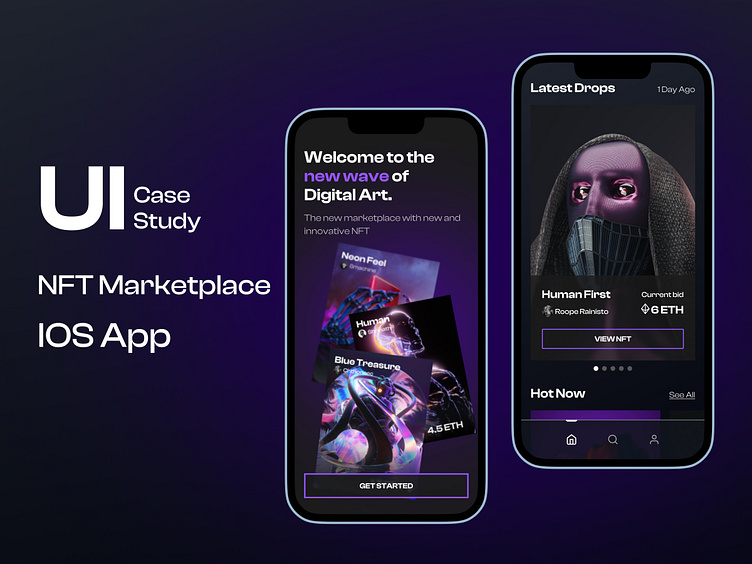NFT Marketplace UI Case Study
🛸 UI Case Study on NFT Marketplace
UI design plays an essential role in creating a user-friendly interface for digital products. In this case study, we will examine the process of designing the user interface for an NFT marketplace.
Background
Our client is a startup company that wants to develop an NFT marketplace that allows users to buy, sell, and trade digital assets with a design-first approach and a deeply curated experience for the users. The marketplace will also provide a platform for creators to showcase and monetize their digital content.
Goal
The goal of this project is to establish the visual language for a new NFT marketplace app that aims to revolutionize the digital art scene. The first step will be to lock down a visual aesthetic and then scale the design across multiple screens based on wireframes and flow provided by the client.
⏳ The project timeline is divided into 3 weeks of work.
🚀 Design Process
🔎 Step 1 Research & Benchmarking
The first step will be to lock down a visual aesthetic and then scale the design across multiple screens based on wireframes and flow provided by the client.
Then, we used these wireframes as a foundation for the high-fidelity design.
🎨 Step 2 Moodboard & Visual Exploration
During our second step, we will be focused on mood board creation and initial visual exploration. The visual design phase involved creating a style guide and choosing the colour scheme, typography, and visual elements. We used the client's branding guidelines to maintain consistency across all design elements.
🔨 Step 3 Polishing & Scaling
In the second week, we will focus on scaling and polishing the design.
After completing the initial design, we'll refine it by carefully reviewing each design element and testing it with potential users. Scaling is also essential to ensure it works well on different devices and aspect ratios. Finally, we'll adapt the design for future updates and changes, making it easier to add new features without redesigning everything from scratch. By polishing and scaling our design, we'll create a high-quality product that meets our users' needs and stands the test of time.
🧪️ Step 4 UI Kit Creation
Overall, creating a UI kit is a key step in the design process, and can help ensure consistency and efficiency in the design of a website or application.
Creating a UI kit is an important step in ensuring a consistent and efficient design process. First, outline the design system and establish a consistent visual language. Create themes, colour palettes, and typography choices, and define design elements like buttons, forms, and icons.
Design individual components of the UI kit with multiple variations to ensure flexibility. Make it easy to use and intuitive for designers and developers.
Include documentation for each component with guidelines for usage and best practices to ensure consistency and efficiency across the design system.
🔗 Step 5 Prototyping
We created a clickable prototype to test the marketplace's usability and gather feedback from potential users. Based on the feedback, we made iterative changes to the design to improve the user experience.
🎊 Final Product & Conclusion
The final product is an NFT marketplace that has a clean and intuitive user interface. Users can easily buy, sell, and trade digital assets, and discover new creators and digital content.
The UI design process is critical to creating a user-friendly digital product. By conducting user research, creating wireframes, designing visually, prototyping and testing, we were able to create a successful NFT marketplace with an intuitive user interface.
Thank you!😇










